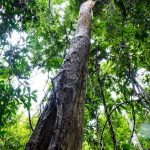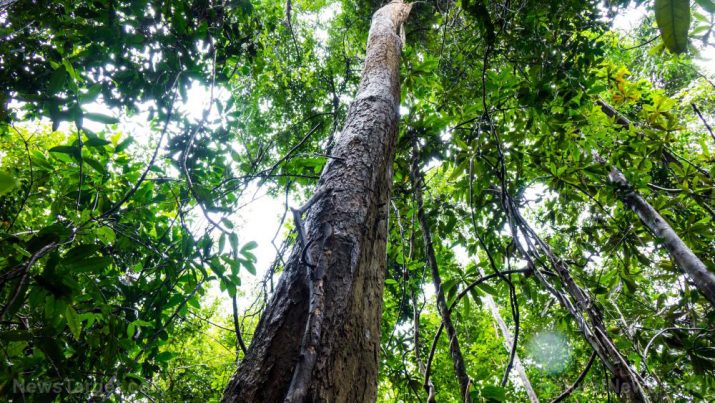
Researchers find way to fight exotic plant invasions of forests through allelopathy
Saturday, September 08, 2018 by RJ Jhonson
http://www.realsciencenews.com/2018-09-08-researchers-exotic-plant-invasions-forest-allelopathy.html

In nature’s contest for the survival of the fittest, plants fight just as hard as animals do: In their arsenal are biochemicals which they often use against other plants. A study published in Allelopathy Journal discusses the role that these chemicals play in the dynamics between native and invasive plant species.
Different organisms compete over finite resources all the time. Plants will sometimes spread biochemicals that inhibit the ability of nearby plants to grow, reproduce, or survive, assuring them of exclusive access to sunlight and minerals in their area. This process is called allelopathy.
While effective, allelopathy is a double-edged sword. Weeds and other invasive plant species can do it, too, with the results often in their favor.
According to the “novel weapons hypothesis,” the introduction of a new plant species to a specific area can disrupt the region’s ecosystem because native species are unfamiliar to it.
Over time, plants become “accustomed” to the other plants and the biochemicals that exist in their area. They co-evolve and develop the ability to coexist with others despite and in favor of diversity.
But the coming of a new species, such as the introduction of a new type of weed, adds a new blend of biochemicals into the mix – one that native species have never encountered before. Unfamiliarity to this “novel weapon” means native species do not have the measures necessary to defend themselves and ensure their continued dominance, leaving them vulnerable.
The authors of the study noted, however, that the effects of the native species’ allelochemicals on invasive species are currently unknown. Using gas chromatography-mass spectrometry (GC-MS), they examined the phenolic acids present in three samples of forest soil in South China and analyzed their allelopathic effects on three of the region’s most notorious invasive species. These were Ipomoea triloba L., Mikania micrantha Kunth, and Wedelia trilobata (L.) Hitchc.
They were able to identify a total of eight phenolic compounds (seven phenolic acids and one phenolic aldehyde). These were benzoic acid, p-hydroxybenzaldehyde, trans-cinnamic acid, p-hydroxybenzoic acid, vanillic acid, 3,4-dihydroxybenzoic acid, p-coumaric acid, and ferulic acid.
Upon testing the compounds’ effects on the relative growth rate (RGR) of the invasive species, the researchers found that none of the individual phenolic acids was strong enough to fight off the invaders. When combined, however, they exerted “strong inhibitory effects” that limited the invasive species’ ability to dominate the area. (Related: Cooperative weed management: Managing herbicide-resistant weeds.)
Moreover, although the same phenolic compounds were found in all three soil samples, their concentrations varied. This appears to indicate that the long-term interaction between the native species and the soil creates a unique phenolic acid environment that’s toxic to the invasive species. As the authors put it, allelopathy, the “novel weapon” of invaders, becomes the “novel shield” of native species.
Examples of allelopathy
Allelopathy is a very common phenomenon. Here are several examples:
- English laurel (Prunus laurocerasus) – This plant’s seeds, leaves, and fruits contain cyanolipids which restrain the growth of any plant that makes contact with it.
- Black walnuts (Juglans nigra) – Juglone, a compound found in this tree’s buds, nut shells, roots, and leaves, suppresses the growth of nearby plants, particularly, tomatoes, eggplants, potatoes, and pines, among others.
- Marigold (Tagetes minuta) – The alpha-terthienyl that this plant produces in its roots does not just kill pests, but also limits the growth of nearby plants.
- Pine (Pinus roxburghii) – The phenols and esters in this tree’s foliage seep into the ground and raises the acidity of the soil. This makes it difficult for competitors to grow closer to it.
- Casuarina (Casuarina equisetifolia) – This tree produces carcinogenic substances that help it impede the growth of plants in the surrounding area.
Go to Ecology.news and discover the many ways plants interact with nature.
Sources include:
Tagged Under: Tags: allelopathy, biochemicals, Ecology, ecosystems, exotic plants, forests, herbicides, invasive plants, native plants, plant chemicals, plant interaction, plant species, research





